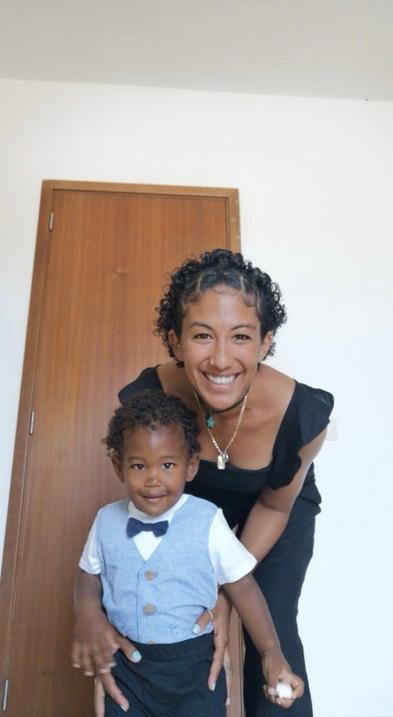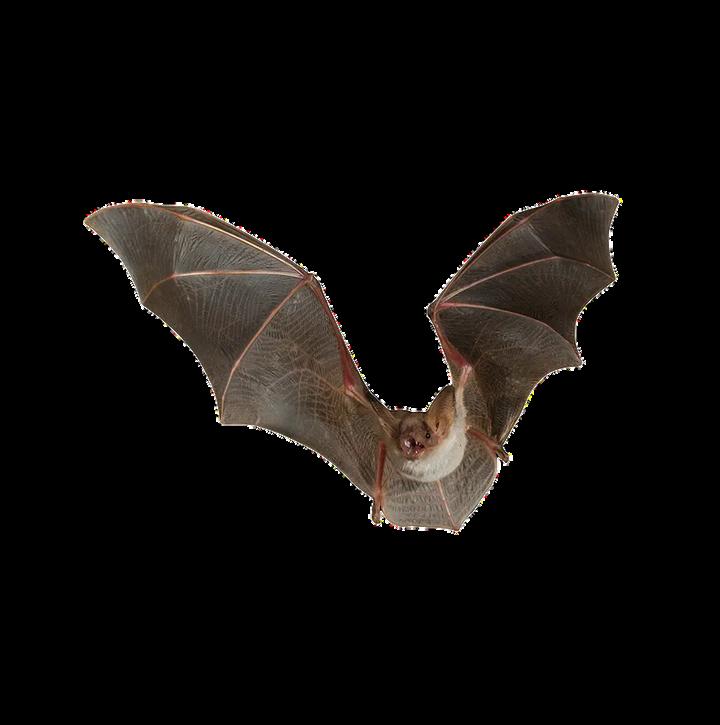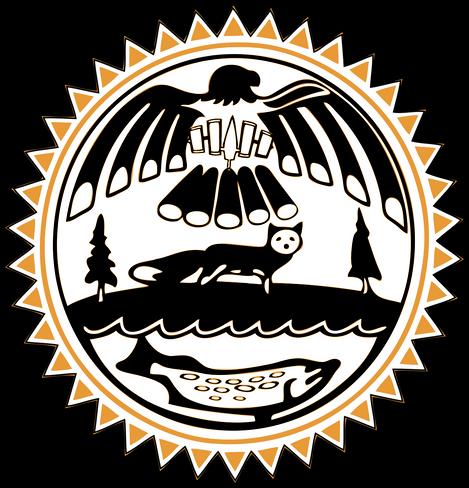THE BUZZ AT KEPO
What's the Buzz at KEPO?
Welcome to our first issue.
This is the official newsletter of the Kahnawà:ke Environment Protection Office (KEPO). In the past, KEPO had newsletters focused on specific topics that were meant to serve as guides to various habitats, plants, and wildlife in the community. The Buzz at KEPO is a new quarterly newsletter that will provide updates on current KEPO initiatives and events, as well as environmental information relevant to Kahnawa'kehró:non. Keep on reading to see what we’ve been doing to protect and better our environment

Nest Trail Update
Aquatic Stewardship Program


Bay Project Update
Climate Change Projects
Kahnawà:ke Dumping Tracker App
Meet the Team
No Mow May Recap
Wildlife Profile
&
Highlights
Project Updates
TheOfficialNewsletteroftheKahnawà:keEnvironmentProtectionOffice FIGHTING TO PROTECT & BETTER OUR ENVIRONMENT J U N E 2 0 2 2 | I S S U E 0 1
Project Update
Nest Box Trail

 by Julie Delisle, Environmental Education Liaison
by Julie Delisle, Environmental Education Liaison
In early 2022, KEPO applied for and was awarded funding from Bird Protection Quebec to support upcoming bird conservation projects including a nest box trail. On April 27, the KEPO team installed the ten nest boxes at the former Kahnawà:ke Survival School campus. The nest box trail project was intended to support populations of eastern bluebirds. By May 20, almost all the nest boxes were taken over by tree swallows.
Like the eastern bluebird, tree swallows are a native species and cavity nesters. Cavity nesters are birds that build nests, lay eggs, and raise their young in holes in dead trees or poles, rock crevices, or similar artificial cavities They are a deep-blue iridescent color with white fronts Tree swallows mainly eat insects and, as aerial foragers, they will capture most of their prey while in flight
Between 1966 and 2014, tree swallows saw a steep population decline in eastern Canada, as part of an overall decline in aerial insectivores This decline is likely the result of insect prey loss and habitat loss Currently, they are listed as least concern in Quebec for conservation.

As of June 23, there were eight complete nests with 24 chicks and nine eggs. KEPO has been happy to share the progress of the tree swallows in social media updates to the community and will continue to monitor the nests until all the chicks have fledged.
BIRD BANDING
With the help of certified banders, 14 tree swallow chicks and four adults have been banded and returned to their nests or released. Each bird received a specific numbered band and if caught again in the future, it will provide researchers with important information about the bird’s life, including life span and travels. Data collected helps us understand bird species better and ultimately, how best to conserve their populations.

FIGHTING TO PROTECT & BETTER OUR ENVIRONMENT J U N E 2 0 2 2 | I S S U E 0 1
Project Update
Aquatic Stewardship Program
by Tyler Moulton, Environmental Projects Coordinator - Aquatic Habitats
KEPO has been working over the past two years to build an Aquatic Stewardship Program (ASP) in Kahnawà:ke. This work is largely funded by the Indigenous Habitat Participation Program (IHPP) of the Department of Fisheries and Oceans The goals of the ASP are to monitor and understand the health of Kahnawà:ke's waters, identify and protect sensitive habitats, identify threats, and develop responses to these threats. The annual monitoring includes three projects: surface water quality (chemical and physical measurements), aquatic invertebrate diversity, and fish diversity and health. The biodiversity monitoring components are indirect measures of water quality High diversity that includes sensitive species indicates good water quality. Low diversity that only includes tolerant species indicates that only the hardiest animals can survive the water quality
Preliminary Findings: Our only major concern regarding chemical pollutants over the past year has been localized high nutrients, particularly in parts of the Little Suzanne River near route 207 These generally come from fertilizers or organic waste washing into streams. This can cause algal blooms which can disrupt oxygen and nutrient availability to other aquatic life. We have found no evidence of dangerous petrochemicals or pesticides
Despite high nutrients, our 2022 sampling has so far found 17 fish species in the downstream areas of the Little Suzanne River Even the high-nutrient sections, while low in fish diversity, host large numbers of small fish that likely feed the herons, egrets, and other swamp predators



WHAT'SNEXT?
Wewillbecomplementingourmonitoringwork withknowledgefromcommunitymembersthis fall.Weplantorecordandbetterunderstand thehistoryofthesestreams,theiruses,and theirchanges.Thisinformation,alongwith annualmonitoringresults,willthenbeshared withKahnawa'keró:nonoverthewinter.
ContactTylerMoultonatKEPOifyouare interestedincontributingduringthe communityconsultationstage.
FIGHTING TO PROTECT & BETTER OUR ENVIRONMENT J U N E 2 0 2 2 | I S S U E 0 1
Brook Silverside - Labidesthes sicculus
Project Update
Tekakwitha Island and Bay Restoration Project
 by Cole Delisle, Environmental Projects Coordinator - Terrestrial Habitats
by Cole Delisle, Environmental Projects Coordinator - Terrestrial Habitats
The Tekakwitha Island and Bay Restoration Project is nearing completion with only a few aspects of the project to wrap up this year. Since the project started in June 2020, we have completed a lot of work to improve the bay area by creating spaces which benefit wildlife and the community


The largest part of the work for 2022 will be completing the planting in all of the areas. Over 17,000 plants will be planted throughout the Bay. The species selected are a mix of aquatic plants, shrubs, and trees which are native to the area and will improve the diversity of plant life, especially on the Island Most the plants will be going into the two large natural zones that were created; the turtle nesting ground, and marsh and pond Other areas to be planted are the firepits, the south shore of the Bay along the bike path, and the new rest areas.
Another project element to be completed is the viewing platform by the marsh in the center of the Island. This will be a great spot to stop and view the wildlife. We will be adding another access point, which you might already have seen by the fitness park along the bike path The access points provide a spot for launching kayaks or fishing and feature large stepping stones down to the water These two items will be completed later in the summer when the water levels have fallen.
FIGHTING TO PROTECT & BETTER OUR ENVIRONMENT J U N E 2 0 2 2 | I S S U E 0 1
Project Update
Climate Change Projects
by Marina Gosselin, Environmental Projects CoordinatorClimate Change

Rain Barrel Giveaway

On April 11, KEPO hosted a rainwater barrel giveaway for Kahnawa’kehró:non In less than two hours of the notification going live, all 90 rain barrels were assigned on a first come, first served basis. The rain barrels, which are made from recycled food-grade plastic with a capacity of 220 litres, were purchased from rainbarrel ca and came

with an installation kit that included a spigot, filter basket and a diverter, among other items. The barrels will permit community members to conserve water and garden sustainably, with nearly all participants stating they will be using their collected rainwater for their gardens. The collection of rainwater can reduce flood risks in yards, as well as prepare for drought conditions
Planting for the Planet Workshop

On Earth day (April 22), KEPO hosted the virtual workshop “Planting for the Planet” with Annie Martin, a biologist and landscaper from Ecological Landscapes. The presentation discussed the advantages and benefits of planting native species at home and in our communities and the impacts of climate change on native species as well as the ways that native plants can strengthen local ecosystems and help us reduce the impacts of climate change.
The aim of the presentation was to guide and teach people on how to care for and grow native plants in their gardens and create chemical-free landscapes that are full of life and support the natural world Overall, about 48 people registered to attend the workshop which was recorded and made available to those who had registered. If you would like access to the recording, please email Marina Gosselin at marina.gosselin@mck.ca.
J U N E 2 0 2 2 | I S S U E 0 1
FIGHTING TO PROTECT & BETTER OUR ENVIRONMENT
New project Meet the team
“Kahnawà:ke Dumping Tracker” App
On June 22, KEPO released announced the development and release of the Kahnawà:ke Dumping Tracker App to the community The app will help track, report, monitor, and support cleanup efforts of areas with a lot of litter or that have been illegally dumped upon across the Territory

The app is open to use by all Kahnawa’kehró:non and allows users to send data to KEPO regarding found dumping sites, including waste contents, severity, location, and pictures, and more. It can be completed on a cell phone using the free ESRI Survey123 field app or through any web browser, using the QR code or following this link: https://arcg.is/18T0mz0

The purpose of this app is to encourage community involvement in waste monitoring, reporting, and cleanup, as well as to highlight successful cleanups; with the goal of keeping the community clean and safe. All information may be submitted anonymously if desired.
GET THE APP
Stephanie Butera
Environmental Projects CoordinatorContaminated Sites
Stephanie joined the KEPO team in April 2022 as the coordinator of contaminated sites projects. She studied biodiversity and conservation in Canada before moving abroad to start her career as a marine biologist She studied river otters and sea turtles in Costa Rica, then moved to the Cape Verde Islands to continue sea turtle research and to photo identify humpback whales. Now back in Canada, Stephanie is excited to learn about the plant and animal species found here, and about conservation issues specific to Kahnawà:ke.
Stephanie loves to be outside, so she is enjoying the summer fieldwork season and will seize every opportunity to go out and learn something new with her colleagues. She is also passionate about sustainable living and looks for ways to reduce her impact on the environment through reducing her consumption and waste producing activities Stephanie is happy to be a member of the KEPO team and hopes to have a positive impact on the community

FIGHTING TO PROTECT & BETTER OUR ENVIRONMENT J U N E 2 0 2 2 | I S S U E 0 1
Project lead: Ahonwakerane Stacey, Environmental Technician
Project Recap
No Mow May/Nó:nen Onerahtohkó:wa Nikahá:wi, Tóhsa’ Sewathéntia'k
by Julie Delisle, Environmental Education Liaison
During the month of May, KEPO organized the firstNo Mow May/Nó:nen Onerahtohkó:wa Nikahá:wi, Tóhsa’ Sewathéntia'k challenge. The No Mow May initiative was designed to raise awareness about the importance of protecting biodiversity and pollinators during an important stage of their life cycle Pollinators are a crucial part of our ecosystems Birds, bats, bees, butterflies, and beetles are needed for the reproduction of 90% of flowering plants and 35% of the global food supply Bees are the world’s primary pollinators who contribute to plant diversity and crop pollination Unfortunately, pollinator populations have seen a dramatic global decline. Nearly one in four native bee species is at an increased risk of extinction. The main threats to these populations include habitat destruction, pesticide use, and climate change (Kopec).
Registered participants were asked to refrain from mowing their grass for the entire month and submit weekly progress pictures so we could share updates and see the progress. We never expected to have 70 households sign up to participate! We also had Step By Step Child and Family Center, The Eastern Door, and the Mohawk Council of Kahnawà:ke join the challenge. It was great to see all the conversations that the challenge sparked and just how passionate the community is about supporting biodiversity. Out of the 70 households, we had 27 who lasted the entire month without mowing and continued to submit progress pictures. Those participants had their names go into a random draw to win one of three gardening-themed prizes
Based on the great feedback received, No Mow May will be an annual challenge hosted by KEPO Make sure to hold onto your lawn signs for 2023 and check out our Facebook page for additional yard and garden care tips


FIGHTING TO PROTECT & BETTER OUR ENVIRONMENT J U N E 2 0 2 2 | I S S U E 0 1
Photo courtesy: Cathy Guimond
wildlife profile
Little brown bat Myotis lucifugus
Description:
The little brown bat has a wingspan between 2527 cm. Females tend to be slightly larger than males They can be a pale tan to reddish or dark brown in colour with dark brown or black wings

The little brown bat is considered an endange species They have few natural preda including owls and raccoons. Diseases such white-nose syndrome, have caused signific population loss since 2006

Female little brown bats will give birth to offspring annually. The offspring are called p They have an average lifespan of 6.5 years. Little brown bats are nocturnal and will navigate and locate prey using echolocation. They will roost during the daytime in hollow trees, caves, and buildings.
Kahnawà:ke Environment Protection Office
450-635-0600
environmentprotection@mck.ca
kahnawakeenvironment.com

@KahnawakeEnvironment
Photocourtesy:Fenlanddavid
There are 18 species of bats found in Canada.
Can weigh as much as a toonie.
Most active 2-3 hours after sunset.
Little brown bats are an important predator for night flying insects.
P.O. Box 720
Kahnawà:ke Mohawk Territory
J0L 1B0

FIGHTING TO PROTECT & BETTER OUR ENVIRONMENT J U N E 2 0 2 2 | I S S U E 0 1
P h o t o c o u r t e s y : J a v e r A l o n s o H u e r t a





 by Julie Delisle, Environmental Education Liaison
by Julie Delisle, Environmental Education Liaison





 by Cole Delisle, Environmental Projects Coordinator - Terrestrial Habitats
by Cole Delisle, Environmental Projects Coordinator - Terrestrial Habitats














